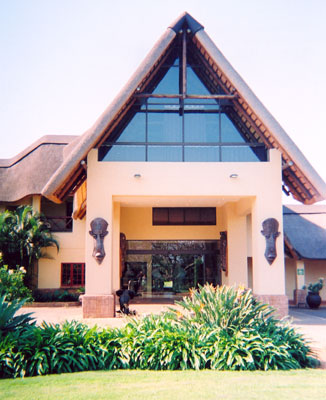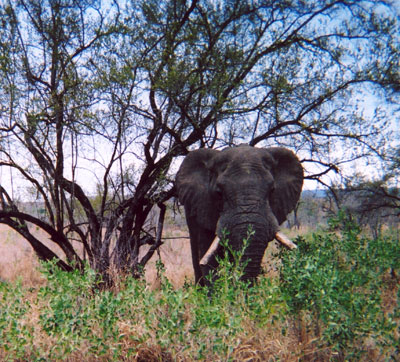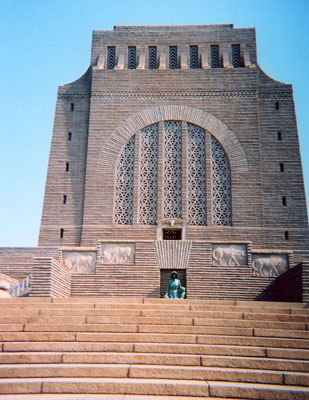Getting great value for money in South Africa and Swaziland
by Diane Harrison, St. Louis, MO
In late summer ’07, my parents and I received a brochure for a 14-day “South Africa Highlights and Safari” package from smarTours (New York, NY; 800/337-7773, www.smartours.com). We had traveled with them in 2006 and felt they provided excellent value for the price. We liked this smarTours’ itinerary, which sounded like a good mix of city stays and safaris, and we were interested in Swaziland, a country not visited by many tour companies.
Making arrangements
I placed a query in ITN’s “Person to Person” section and received almost 20 responses, many of them from travelers who had visited South Africa with smarTours. We also studied AAA’s “Essential South Africa” and the Insight FlexiMap of South Africa.
We decided to travel Oct. 7-20, 2008, because we wanted to see the spring flowers while avoiding the rainy season in Cape Town and Johannesburg.
With the early-booking discount, the cost was $2,799 per person, double occupancy, from New York plus $195 in departure and airport taxes and fees and $99 for travel insurance. The tour included daily breakfasts, two lunches and five dinners.
On Oct. 7 we flew from New York’s John F. Kennedy Airport to Johannesburg’s O.R. Tambo International Airport. The 16-hour South African Airways flight was smooth and the service, good. After a short layover, we flew another two hours to Cape Town.
Cape Town
Our guide, Ron McGregor (personal website, http://users.iafrica.com/r/ro/ronmac) of Springbok Atlas, smarTours’ ground operator in South Africa, met our group of 34 at the airport.
Ron stayed with us for the entire trip and was an excellent guide. As a native South African, Ron provided wonderful insights into his country’s history as well as invaluable tips on food, water (safe to drink) and safety.
In Cape Town we stayed at the Protea Hotel President in Bantry Bay. All of our hotels were great, but the Protea President was a real treat. Our rooms were suites with partial kitchens, the pool was beautiful and the restaurant was very good.
We spent three full days in Cape Town and found the places we visited to be clean and safe. There is a reliable shuttle bus that runs along Beach Road from the Victoria & Alfred Waterfront to Bantry Bay, and we used it twice (R4.20, or about 50¢, one way). We also used a private shuttle bus (R5 one way). Private shuttle buses are a small industry in South Africa, but they may not be safe outside of the major tourist areas.
We had an included half-day city sightseeing tour with a cable-car trip to the top of Table Mountain. Also included was an excursion to the Cape Peninsula. This was my favorite day of the tour.
We started at the beach in Clifton, a suburb of Cape Town, and drove through the Twelve Apostles Mountains. We visited the Cape of Good Hope Nature Reserve, where we saw wild ostriches on the beach and unique plants belonging to the Cape Floral Kingdom, then we visited the African penguin colony at Simon’s Town. On the drive back to Cape Town, we watched whales playing in the ocean close to shore.
Some free time
On our free day in Cape Town we visited the Two Oceans Aquarium (phone +27 21 418 3823, www.aquarium.co.za) at the waterfront. The aquarium (entry R85, or $8.50) has fish and sharks from the region as well as a small African penguin colony.
We then took a taxi from the waterfront to the Castle of Good Hope (phone +27 21 787 1260, www.castleof goodhope.co.za), which houses three different museums, including the William Fehr Collection of art.
From the castle, we walked through downtown to the Company’s (Public) Garden and ate a delicious lunch in the Public Gardens Restaurant. Three hamburgers with French fries and hot tea totaled R130. We also visited the Garden’s Iziko South African Museum (www.iziko.org.za — entry R15), which opened in 1825 and is the oldest museum in sub-Saharan Africa. Exhibits focused on anthropology, natural history, animals, fossils and geology.
SmarTours offered two optional tours in Cape Town: a “Cultural Heritage Tour” operated by the group Roots of Africa and a “Winelands Tour.” We did not book either tour but heard that they were informative and interesting.
On to Zululand
On day four we took a 2-hour morning flight to Durban. The city is overcrowded and poor, and the downtown area was littered with garbage, with thousands of people loitering. Our only stop was at the Durban Botanic Gardens, which had a beautiful orchid house.
From Durban we drove through Zululand to Protea Hotel Hluhluwe & Safaris, where we stayed for two nights. Zululand appeared to be very poor. There are large eucalyptus tree, pineapple, sugarcane and sisal farms in the area but not much industry.
In the morning we took an included open-vehicle safari in Hluhluwe-Umfolozi National Park, which has a breeding program for the endangered white rhino. We did not see many rhinos, but we did see giraffes, wildebeest, warthogs, Cape buffalo and impalas. Their rainy season was overdue, causing hot and dusty conditions.
After the safari, we visited the re-created village of Shakaland. The tour guides lacked enthusiasm and, as a result, we did not enjoy the visit. Several in the group took an optional afternoon safari, but we decided to relax by the pool.
Swaziland
After leaving Hluhluwe, we entered the Kingdom of Swaziland. We ate lunch at Linda’s Coffee Shop, located in The Gables mall in Lobamba, a town in the Ezulwini Valley. The food was delicious and inexpensive (without drinks, about R115, or $14.50, for three entrées).
On the way to the Piggs Peak Hotel & Casino, where we had our only one-night hotel stay, we stopped at the Ngwenya Glass factory, a business that uses recycled glass to create beautiful objects. The souvenirs available there were more reasonably priced than those in the South African tourist shops.
We were impressed with Swaziland, which is a beautiful country of desert and mountains. It appeared more prosperous than Zululand, as there were many schools, farms and businesses.
Kruger National Park
Our next stop was South Africa’s Kruger National Park. Upon arrival at the park, two-thirds of the group opted for an open vehicle safari (R550). Since there was an included safari the following day, the three of us decided to ride through the park on the tour bus. We did not see many animals but saw a large number of African birds, including eagles, vultures and bushveld parrots.
Our hotel was the Protea Hotel Kruger Gate, ideally situated at the edge of the park. There were many antelope, impalas and vervet monkeys on the grounds.
Kruger was the only place where the insects bothered us. Ants were bad, and malaria is a danger in the region.
On the following day, we left the hotel at 5:15 a.m. for our full-day safari. We were fortunate to see large groups of elephants, wildebeest, Cape buffalo, impalas and baboons. We also saw African fruit bats and many types of birds. Kruger, like Hluhluwe, was hot and dusty.
Continuing to Jo’burg
After leaving Kruger, we drove through several small towns on the way to Blyde River Canyon. We stopped at the canyon, God’s Window and Bourke’s Luck Potholes, all of which provided scenic photo opportunities. Our lunch stop was in the artists’ town of Graskop, which offers a variety of tourist and art shops.
The drive from Kruger to Johannesburg was the longest driving day of the tour, and we did not arrive at our hotel in the Johannesburg suburb of Sandton, the Protea Hotel Balalaika Sandton, until almost 8 p.m.
Our included half-day Johannesburg city tour focused on Soweto and included a visit to the Hector Pieterson Museum (8288 Khumalo St., Orlando West; phone +27 11 536 0611), named after one of the first casualties of a June 1976 student march through Soweto in which the students were protesting the government’s decision to teach in Afrikaans. Our group also viewed the houses of Desmond Tutu and Nelson Mandela.
The three of us booked the optional half-day tour to Pretoria (R390), which was a highlight of the trip. We visited the Voortrekker Monument & Museum (phone +27 12 321 6990), a memorial to the early Afrikaner settlers of the Transvaal, and we walked around the Union Buildings and along Church Street and Embassy Row.
The city’s 750,000 jacaranda trees have a short spring blooming period but were in full bloom during our visit.
We had a free half-day in Johannesburg at the end of the tour, but due to the high crime rate we felt it was not safe to explore the city. Instead, we walked to several upscale shopping malls within two blocks of our hotel.
South Africa and Swaziland are beautiful, interesting and diverse countries.
Both have high unemployment and high HIV/AIDS rates, and South Africa is politically unstable, but in spite of these issues we enjoyed our visit to both countries.
I would not hesitate to recommend this smarTours vacation to other travelers.




